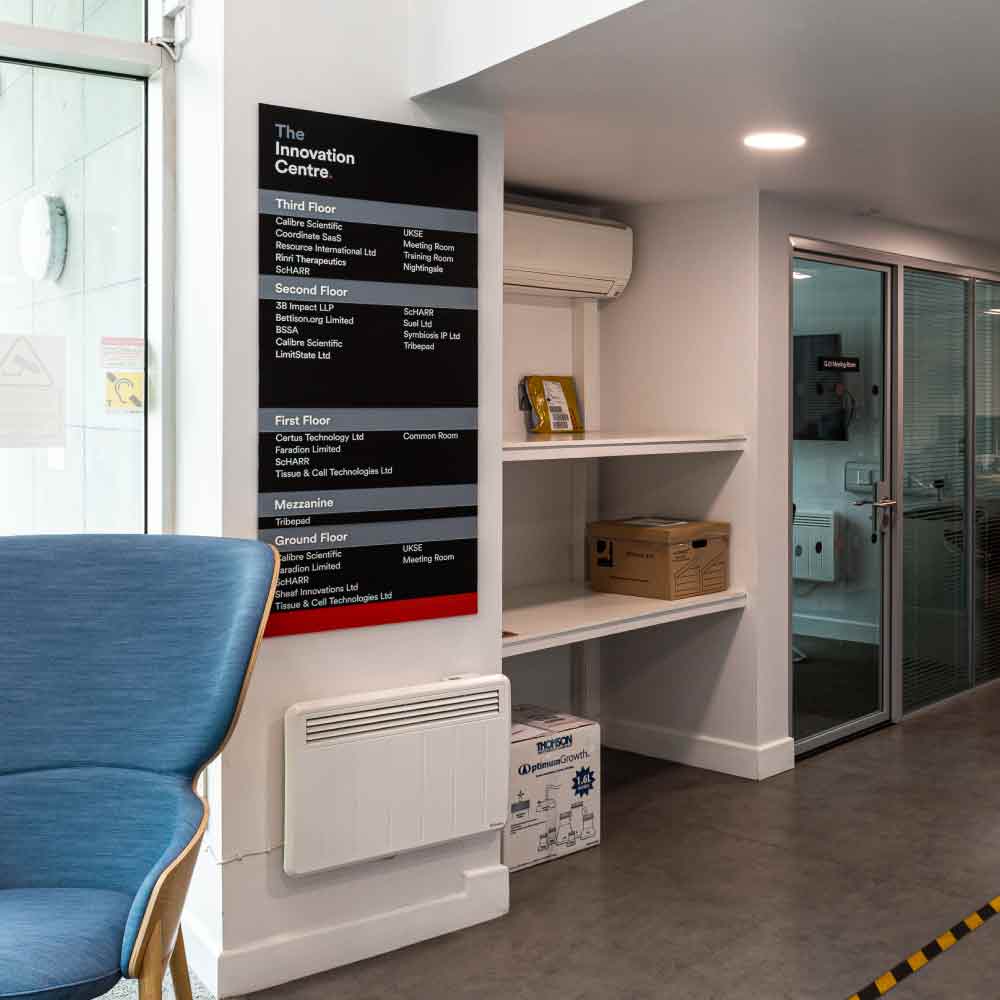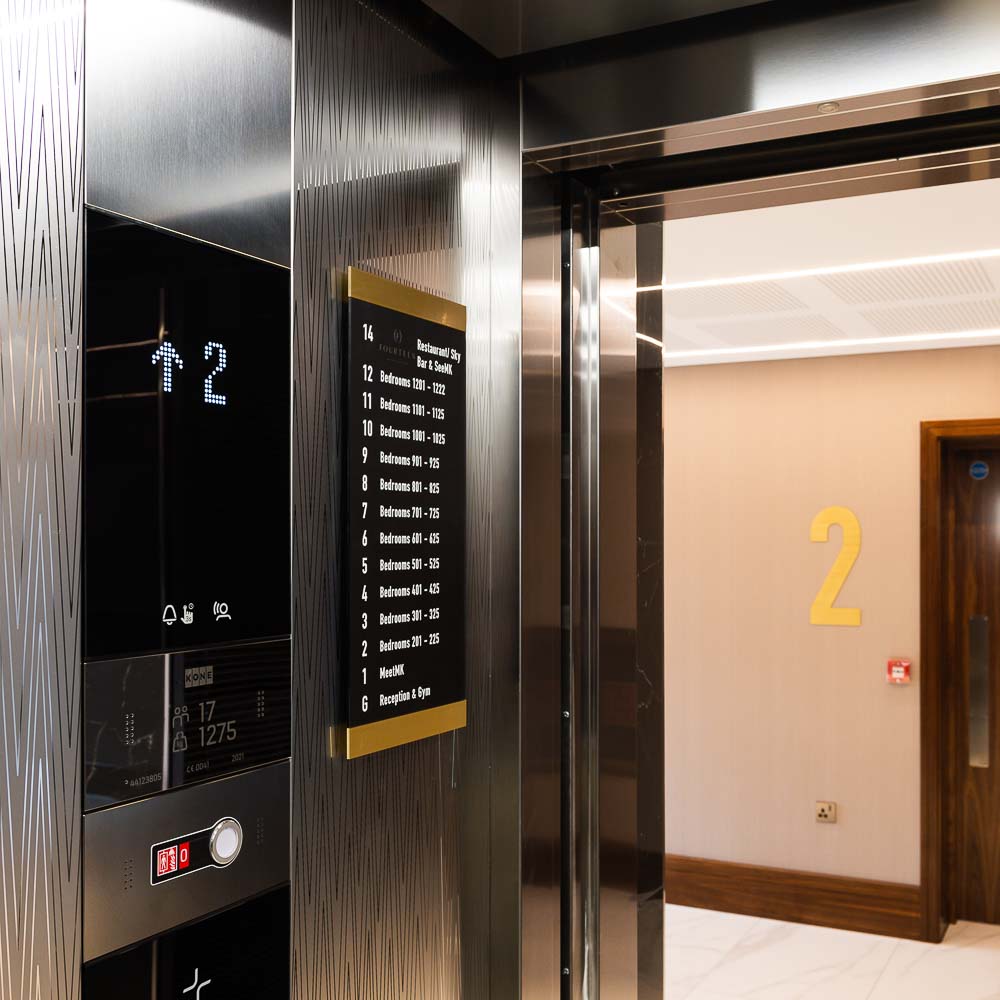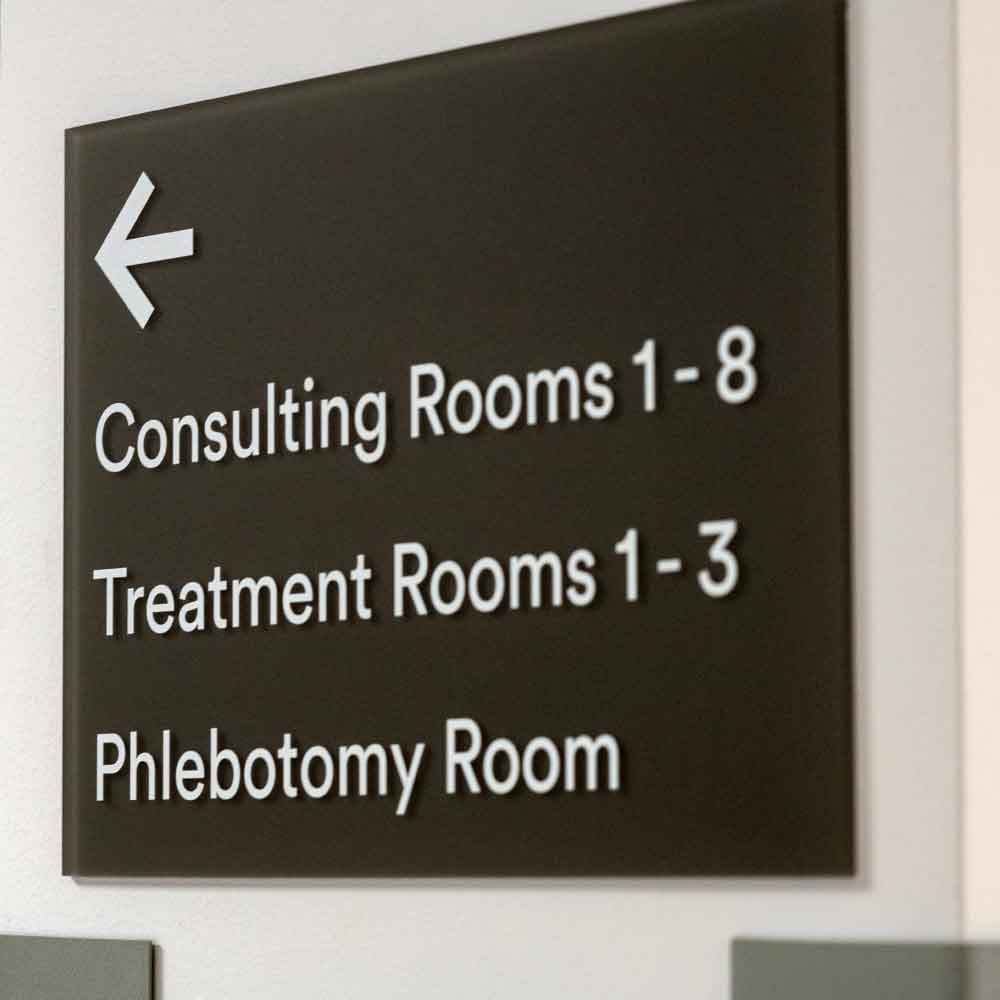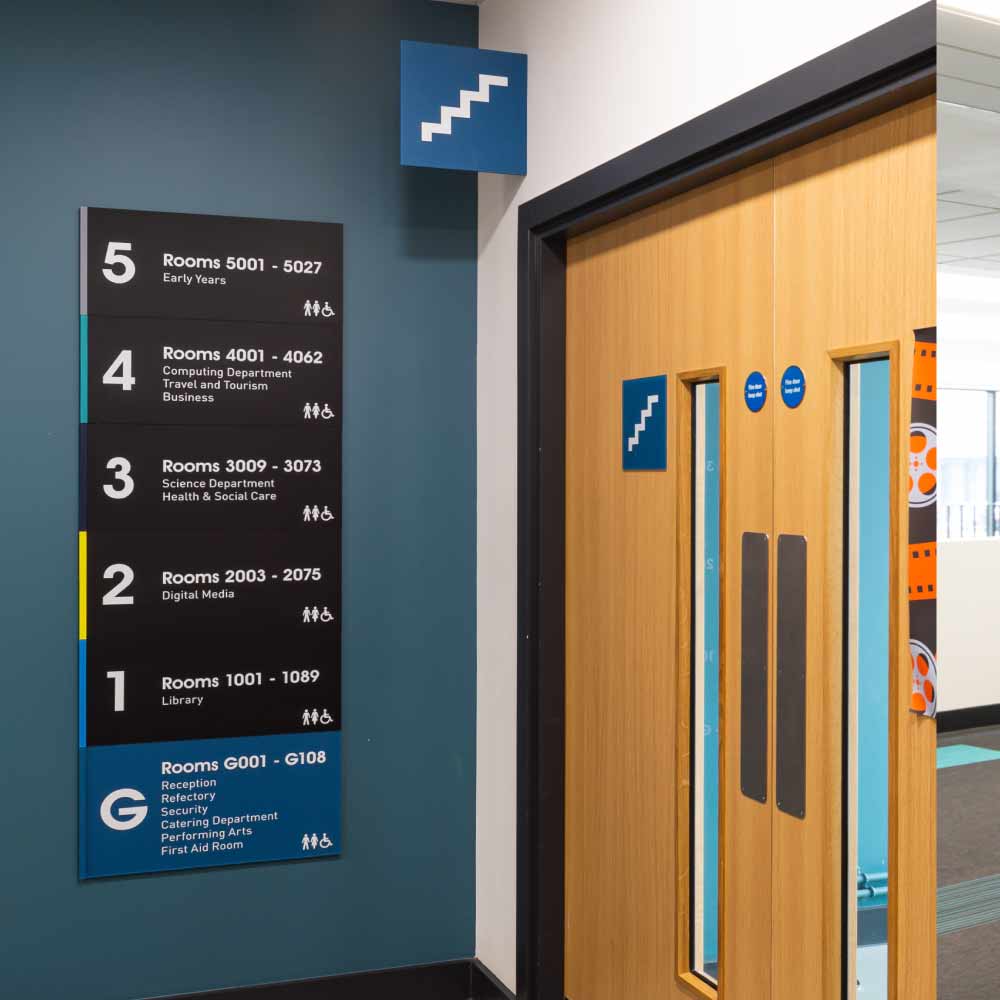Updating and upgrading computer, security and operational systems is normal for a business but often, signage takes a back-seat. Wayfinding signage, however, is one of the most important interactions your customers have within your building. It doesn’t matter if you are in a hospital, hotel or educational institute, how frustrating is it if you can’t find your way because of a lack of signage? Even more so if the signs that are there, are out of date or unclear.
Therefore wayfinding signage should be looked at regularly, from a customer service perspective, as well as a health and safety one.
What is wayfinding signage?
Wayfinding signage refers to internal and external signage that gives information to the people using the area. Direction signs for example, are a key part of wayfinding. Directions that clearly point the way to A&E at a hospital or the lifts to rooms in a hotel. These are an important part of the visitor journey. Equally important are identification signs. These signs tell you what something is – toilets, meeting room one or stairs to carpark for example.
Signage that explains rules such as no dogs, no smoking and no parking help people understand what can and can’t be done in that area. More information can be found on signs that answer questions such as free parking or please wait here to be seated. All these signs combine to make the wayfinding experience as easy as possible for visitors.
Why is good wayfinding signage important?
A stress-free experience is all customers/staff want when entering a building. If they are going to hospital, work or school they are likely already stressed out just by being there. The same goes for visitors who do not regularly use the building, it does not look good to a prospective employee arriving for a job interview if the signage is not well maintained.
Keeping wayfinding signage in good condition is also important because so much signage hangs on walls and ceilings; if it is not checked it could become a hazard. Checking the signage should be part of every daily maintenance walk-around that happens.


Improving the customer experience with wayfinding signage
Include checking the signage in your regular mystery-shopper experiences. Although these are usually used in shops and hospitality, they are useful for any business and can identify all sorts of issues that can be fixed quickly. The key is to have a variety of people with different needs take part. Invite wheelchair users, people with non-visible disabilities, auditory and visual impairments, autism and other physical or neurological situations to assess your wayfinding signage. This will highlight the areas you can improve on to make the environment more welcoming and accessible.
The assessment might highlight the need for clearer or larger print, a change of colours, more accessibility aids or areas that are missing signage where it would be better if there were some.
Another way to find out if changes are needed is to review customer and staff feedback. If there is an area of the building getting complaints or a regular spot staff get asked for directions, then those are the signs signage should be updated.
If the wayfinding signage also has not been updated for some time it is possible that room numbers and departments have moved. Have the signs been changed to match the move? Regular reviews will highlight this but can also be included in the planning process for moving internally.
Whether you are welcoming one-off or regular visitors, your wayfinding signage is always going to be part of their experience. Make that experience a consistently good one, with a wayfinding signage strategy that includes regular maintenance and experience checks.


